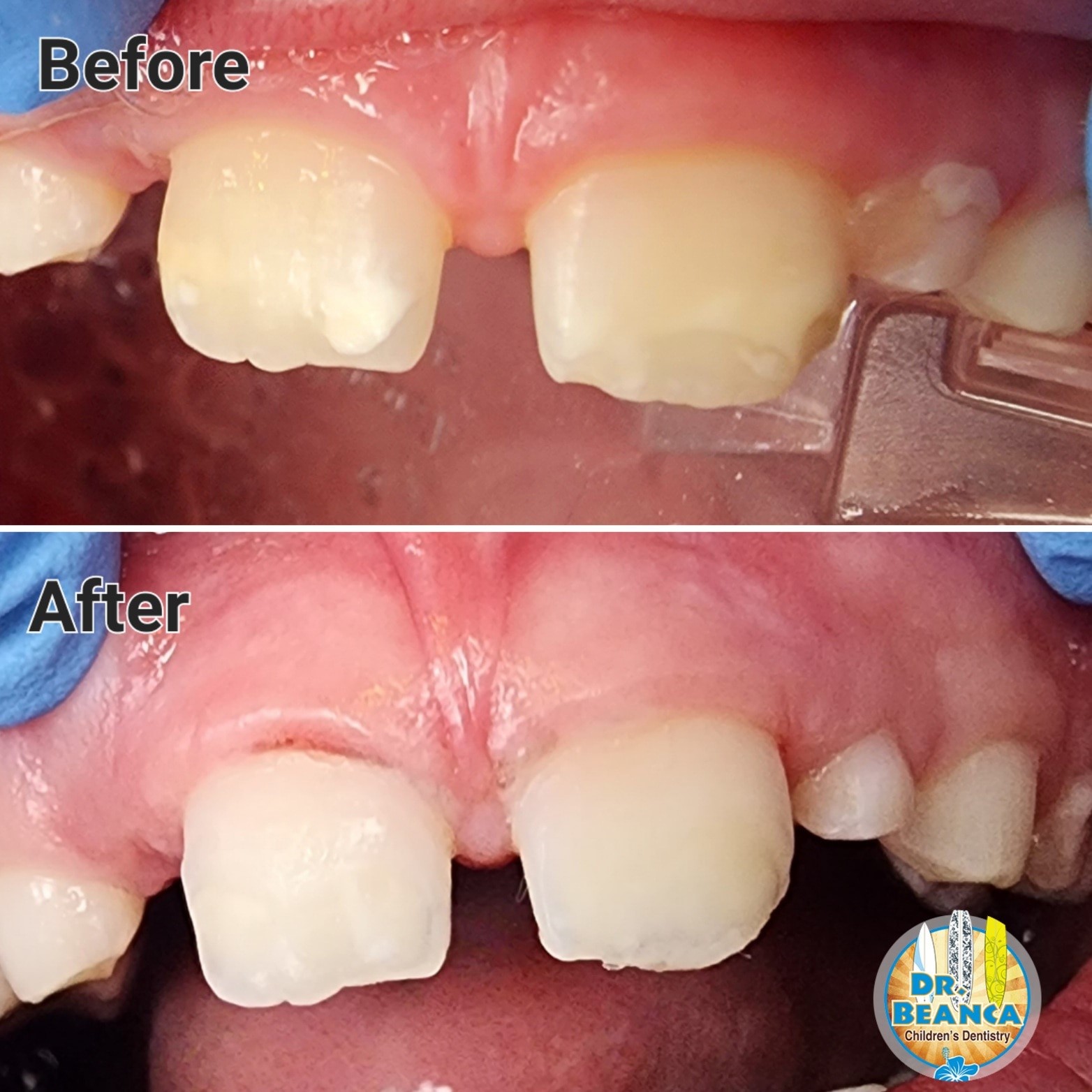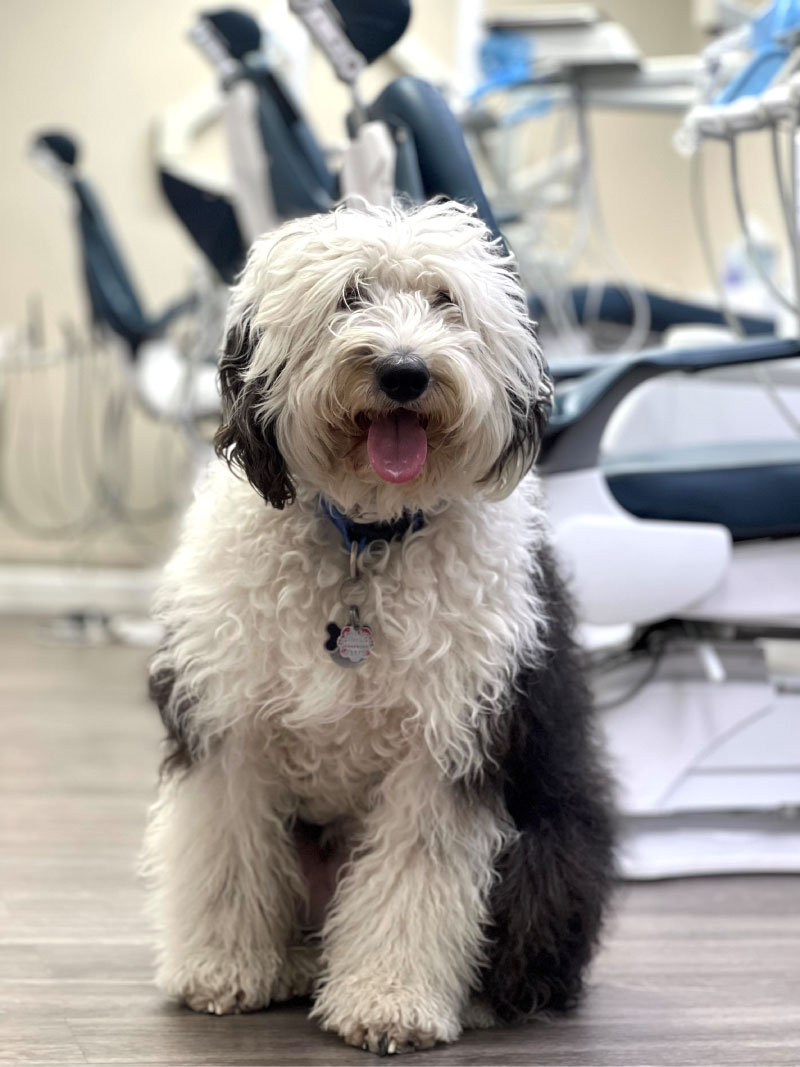CONGENITAL ENAMEL DEFECTS
Congenital Enamel Defects are less than perfect white or brown spots on teeth which could affect your smile. Dr Chu is proud to offer ICON treatment, an innovative and painless way to erase those lesions without the need of drilling. The ICON treatment is not a cure for congenital enamel defects. However, it can significantly improve the appearance of teeth with white spots and pits. The treatment can also help to protect the teeth from decay.
The ICON treatment process involves the following steps:
- The dentist will clean the teeth with a pumice paste.
- The dentist will apply a mild acid to the teeth to open up the pores in the enamel.
- The dentist will then apply a resin to the teeth. The resin will penetrate into the pores in the enamel and seal them up.
- The dentist will then light cure the resin.
What are some of the benefits of ICON treatment?
- It is minimally invasive.
- It is painless.
- It can be done in one visit.
- It is effective in improving the appearance of teeth with white spots and pits.
- It can help to protect the teeth from decay.
What causes congenital enamel defects?
- Genetics: Some congenital enamel defects are inherited. For example, amelogenesis imperfecta is a genetic disorder that causes a variety of enamel defects.
- Infections: Some congenital enamel defects can be caused by infections during pregnancy, such as rubella or syphilis.
- Nutritional deficiencies: A lack of certain nutrients during tooth development, such as vitamin D or fluoride, can also lead to congenital enamel defects.
- Trauma: Trauma to the developing teeth during pregnancy or birth can also cause congenital enamel defects.

What are some common symptoms of congenital enamel defects?
- White spots: These are small, white areas on the teeth that are caused by a lack of enamel.
- Pits: These are small, round depressions in the enamel that can make it difficult to clean the teeth.
- Grooves: These are long, narrow depressions in the enamel that can make it difficult to chew food.
- Thin enamel: This is enamel that is not as thick as normal enamel. This can make the teeth more susceptible to decay and breakage.
What are common treatments for congenital enamel defects?
- ICON treatment: This is a minimally invasive treatment option for congenital enamel defects. It has been shown to be effective in improving the appearance of teeth with white spots and pits.
- Fluoride therapy: This can help to strengthen the enamel and make it more resistant to decay.
- Sealants: These can be placed on the teeth to protect them from decay.
- Bonding: This can be used to fill in pits and grooves in the enamel.
- Veneers: In severe cases, veneers may be necessary to protect the teeth.
If you have any concerns about congenital enamel defects, it is important to see a dentist. They can assess the severity of the defect and recommend the best course of treatment.
A child’s first visit to the dentist should be enjoyable. Children are not born with a natural fear of the dentist, but they can fear the unknown. Our office makes a special effort to use pleasant, non-frightening, simple words to describe each treatment. We want you and your child to feel at ease from the moment your family arrives at our office.
$106 Children's New Patient Dental Exam*
Save $48!
Children Under Three for FREE
Bring your children in before their third birthday for a complimentary exam and oral hygiene instruction.
$69 Children's Dental Cleaning & Fluoride*
Save $37!
If You Are Looking for a Great Place for Your Kids to Smile...
look no further than the office of Dr. Beanca Chu. With her kid-oriented style, Dr. Beanca--as she is known to her patients--gets children excited about their dental care. Her extensive training in clinical and sedation dentistry as well as child behavior management allows her to guide children toward developing health habits that will last a lifetime.
Dr. Beanca communicates carefully with parents and children to build the foundation for great smiles. She received her doctorate from Case Western Reserve University and went on to complete a pediatric residency at USC. Dr. Beanca is certified by the American Board of Pediatric Dentistry.
In her free time, Dr. Beanca enjoys spending time with her husband, Dr. Shawn (our office's orthodontist), and their children. She also loves to travel, read, visit amusement parks and watch surfers by the pier.
Riply Calms Kids' Fear with Love
Ripley works with our patients to give them the experience we want each patient to have. He's an AKC-Certified Canine Good Citizen and a Certified Therapy Reading Dog that serves libraries in Orange County. Request an appointment today for a paws-i-tive dental visit and meet Ripley!
Book Your New Patient Appointment Today!
American Academy of Pediatric Dentistry recommends...
Children should visit the dentist by their first birthday. It is important that your child’s newly erupted teeth (erupting at six to 12 months of age) receive proper dental care and benefit from proper oral hygiene habits right from the beginning.
Comprehensive Services
- High-tech sterilization
- Digital x-rays to reduce radiation exposure
- Tooth-colored restorations
- Orthodontics for children and teens
- Silver diamine fluoride to protect teeth
- Gentle laser treatments heal faster, calm sensitive teeth, and treat cavities
- Surf-themed office, specially designed for kids
- Ceiling-mounted flat-screen TVs
- Prizes and treats
Book Your New Patient Appointment Today!
Never settle when it comes to your smile! Book your appointment with our office today to get the dental care that you deserve!



